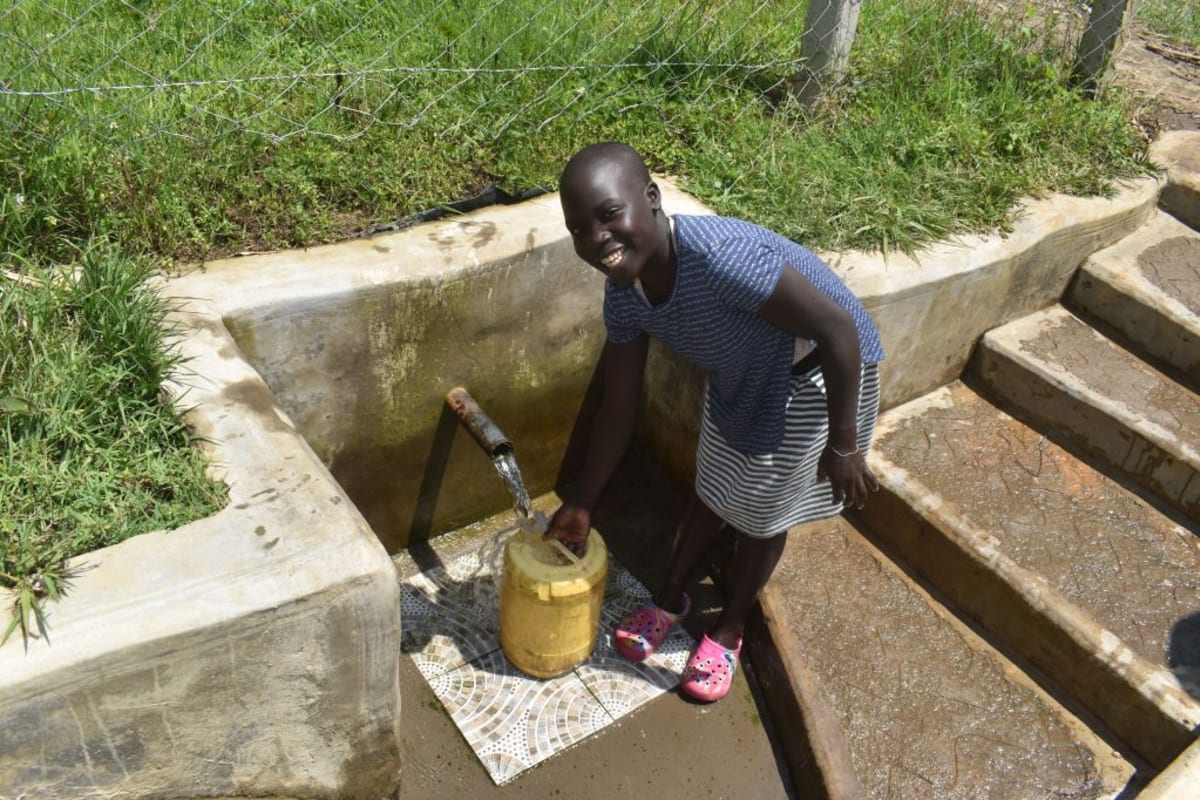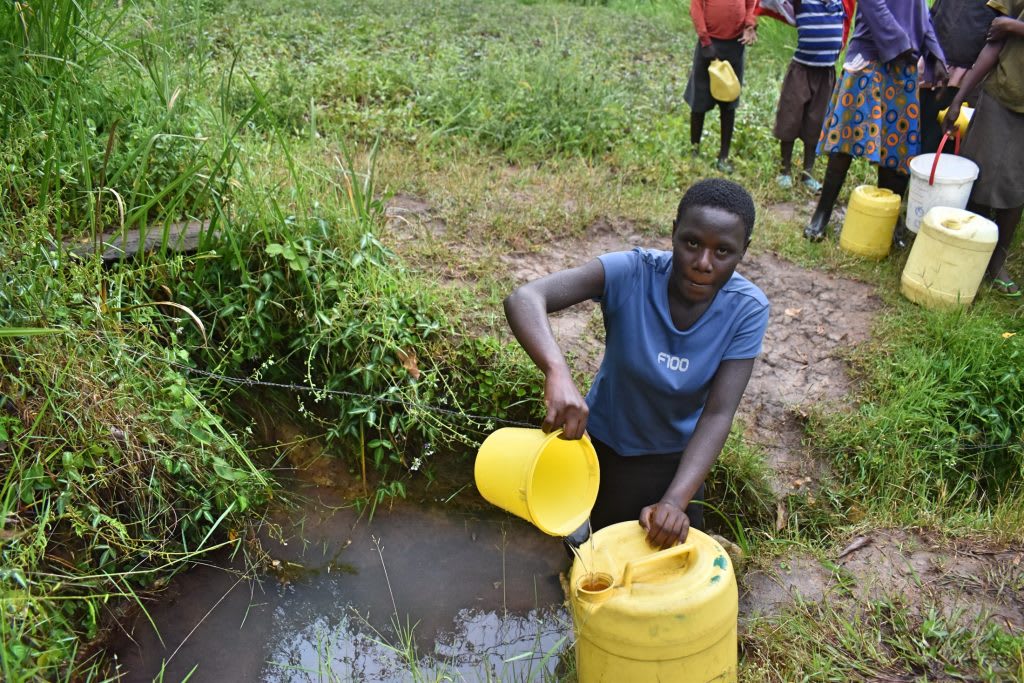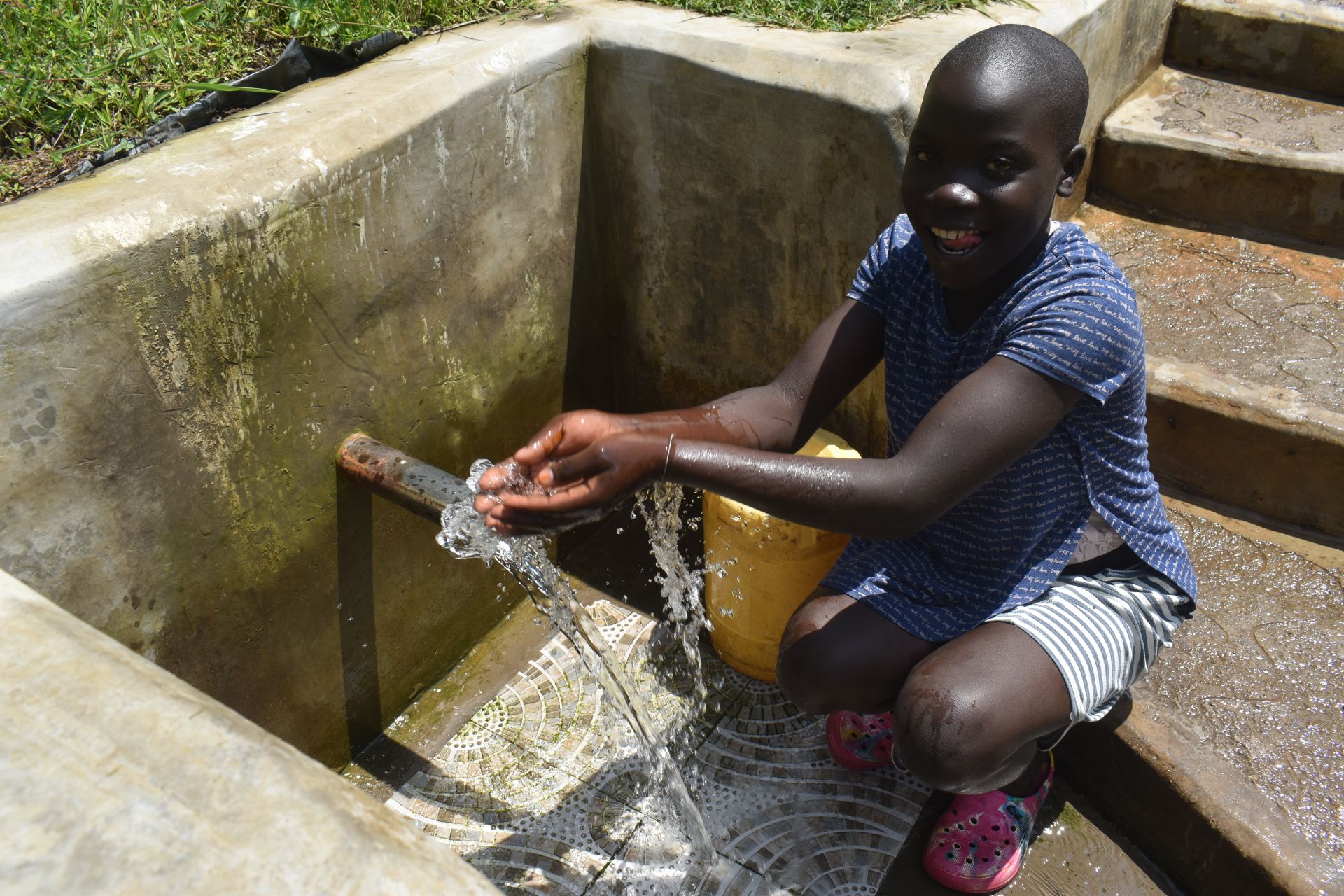The 140 individuals residing in the Shikose community have been grappling with waterborne diseases for a while now. Their primary water source, a local spring, is severely polluted. Community members work hard to collect water, which will likely in the end make them unwell.

54-year-old Farmer Samuel Luvare (shown below) shared, "Water from this source is not safe for drinking. Since my childhood, my parents [have been] fetching water for drinking and domestic use from this source up to this century."

"During [the] rainy season, my family members and I are being affected by water-related ailments which have affected our health and economic production since seeking medication is very expensive," he continued.
But contamination isn't the water point's only problem. During the dry seasons, the water available for collection becomes sparse, and community members must endure lengthy queues to fetch water slowing down everyone's collection times and bringing other activities to a halt.
"During dry seasons, my mother forced me to wake up very early in the morning to fetch Water for drinking for her to prepare breakfast for the family. I remember this year during [a] dry spell where I did not go to school because I had to wait for a longer period of time to fetch Water," said 14-year-old Faith M.

Faith and other students in the Shikose community are missing school because they have to wait in line for long periods of time to collect the contaminated water. This is a serious issue, as it is affecting their education and putting their health at risk.
The unprotected spring steals community members' health, finances, time, and peace. They can't consume this water without the risk of getting sick, and there are no other options for water collection. This makes life in Shikose extremely burdensome.

By protecting the spring, individuals like Samuel and Faith can dedicate their time to building a brighter future for themselves and their community instead of wasting their valuable resources on treating illnesses caused by consuming unsafe water.
The Proposed Solution, Determined Together...
At The Water Project, everyone has a part in conversations and solutions. We operate in transparency, believing it benefits everyone. We expect reliability from one another as well as our water solutions. Everyone involved makes this possible through hard work and dedication.
In a joint discovery process, community members determine their most advantageous water solution alongside our technical experts. Read more specifics about this solution on the What We're Building tab of this project page. Then, community members lend their support by collecting needed construction materials (sometimes for months ahead of time!), providing labor alongside our artisans, sheltering and feeding the builders, and supplying additional resources.
Water Access for Everyone
This water project is one piece in a large puzzle. In Kenya, Sierra Leone, and Uganda, we're working toward complete coverage of reliable, maintained water sources that guarantee public access now and in the future within a 30-minute round trip for each community, household, school, and health center. One day, we hope to report that this has been achieved!
Training on Health, Hygiene & More
With the community's input, we've identified topics where training will increase positive health outcomes at personal, household, and community levels. We'll coordinate with them to find the best training date. Some examples of what we train communities on are:
- Improved hygiene, health, and sanitation habits
- Safe water handling, storage & treatment
- Disease prevention and proper handwashing
- Income-generation
- Community leadership, governance, & election of a water committee
- Operation and maintenance of the water point
Chlorine Dispensers
Installing chlorine dispensers is an important piece of our spring protection projects. Protecting a spring provides community members with an improved water source, but it doesn’t prevent contamination once the water is collected and stored. For example, if the water is clean and the container is dirty, the water will become contaminated.
We ensure that each chlorine dispenser is filled with diluted chlorine on a consistent schedule so that people can add pre-measured drops to each container of water they collect. That way, community members can feel even more confident in the quality of their water.





 Protected Spring
Protected Spring
 Rehabilitation Project
Rehabilitation Project


































